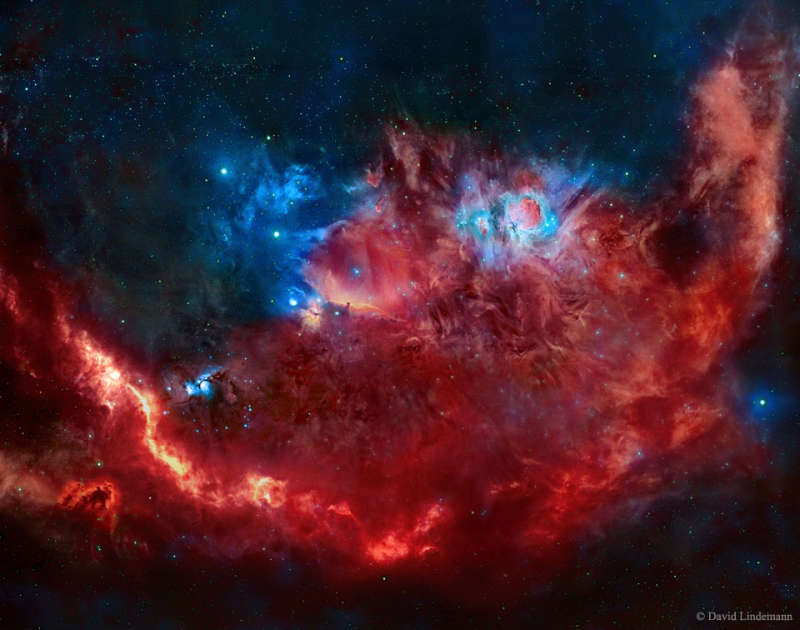 |
Астронет: Астрономическая картинка дня Орион в красном и синем цветах http://www.variable-stars.ru/db/msg/1441494/eng |
Credit & Copyright: David Lindemann
Explanation:
When did Orion become so flashy?
This colorful rendition of part of the
constellation of Orion comes from red light emitted by
hydrogen and
sulfur
(SII), and blue-green light emitted by
oxygen
(OIII).
Hues on the
featured image
were then digitally reassigned to be indicative of their
elemental origins -- but also striking to the
human eye.
The breathtaking composite was
painstakingly composed from
hundreds of images which took nearly 200 hours to collect.
Pictured, Barnard's Loop, across the image bottom,
appears to cradle interstellar constructs including the intricate
Orion Nebula seen just right of center.
The Flame Nebula can also be quickly located,
but it takes a careful eye to identify the slight indentation of the dark
Horsehead Nebula.
As to Orion's flashiness -- a leading explanation for the origin of
Barnard's Loop is a
supernova
blast that occurred about two million years ago.
Share the Sky: NASA Open API for APOD
Authors & editors:
Robert Nemiroff
(MTU) &
Jerry Bonnell
(USRA)
NASA Web Site Statements, Warnings,
and Disclaimers
NASA Official: Jay Norris.
Specific
rights apply.
A service of:
LHEA at
NASA /
GSFC
& Michigan Tech. U.
